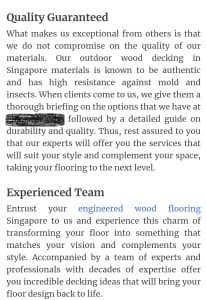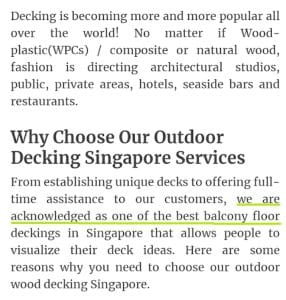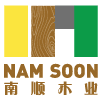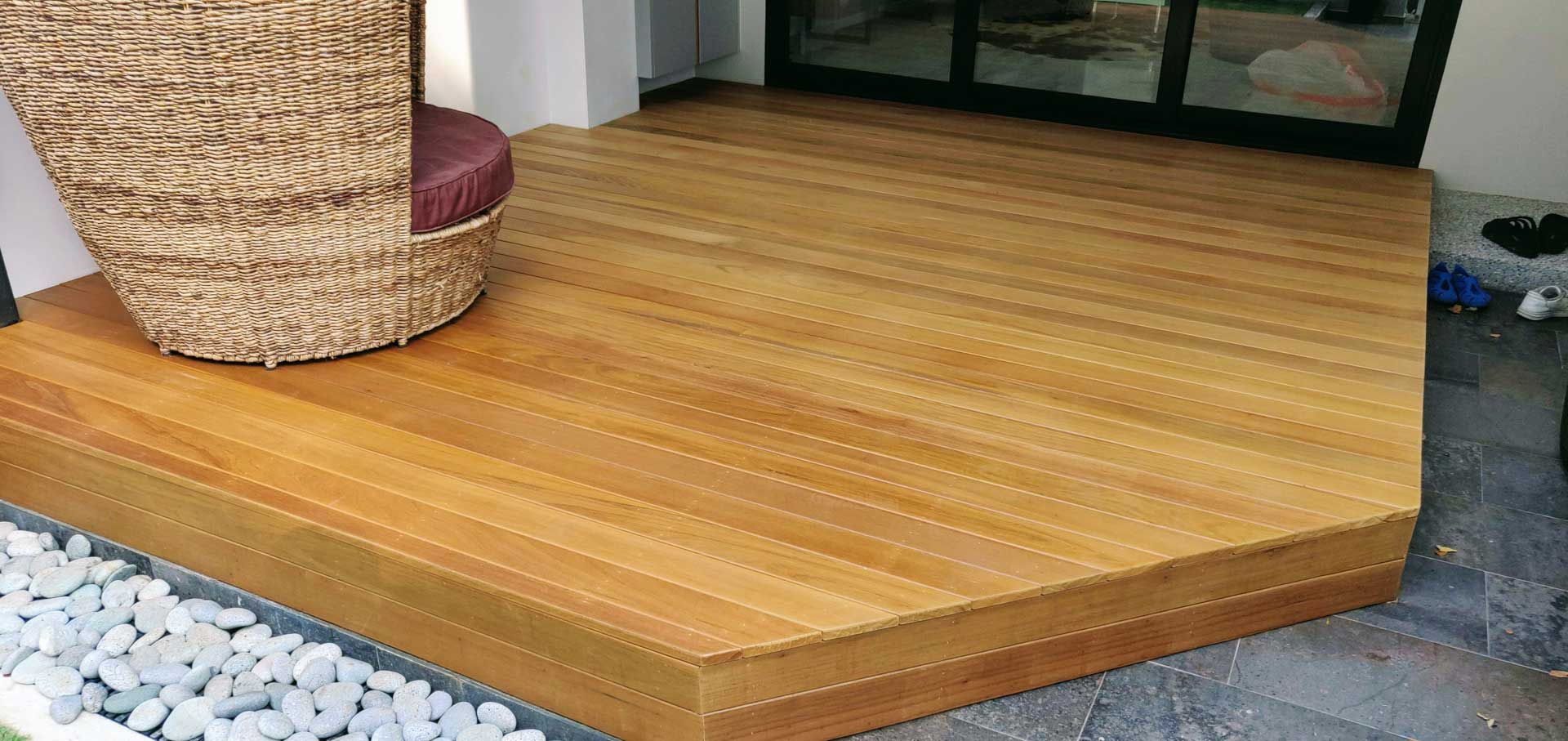Exploring cues and clues within the website
So, it has come to our attention today that a relatively new timber decking company (established in 2019, according to ACRA) has lifted wholesale one of our project photos from our website (Softline® Merbau Decking | Nam Soon Timber Decking) and passed it off as their own on their website, without any authorisation from us.
Mixed emotions on this – while we are understandably upset about this (more on this later), but at the same time, we are flattered that this has happened. This is a testament to the good work that our company has done all these years. However, it is also disappointing to see that a young upstart in this industry has to resort to plagiarism of intellectual property in order to get their business up and running.
And since we are already on this topic, I would like to take the opportunity to dissect the website of this new company, in order to help everyone make a more informed decision in choosing the correct vendor (not only in the timber decking sector, but in every other industry). I have narrowed down to 3 main points that the end user should identify on a vendor’s website to help them determine the reliability of the vendor.
1) Using generic stock photos or photos from other vendors
2) Writing generic text
3) Does not have their own brand of timber decking products
Using Generic Stock Photos / Photos from Other Vendors
A picture speaks a thousand words. So does the pictorial content on the website. A tenured company with years of experience in the industry can easily fill their website with 100% original content and photographs, instead of resorting to plagiarism or using Google Images.

Backdrop photo skillfully extracted from our website and repurposed on their website by the offending company.
Writing Generic Text
Same as above, without original content and actual industry experience, the newbies will have to reuse content and information from other sources, as well as injecting filler texts to make up the website. Their website will feel more like a textbook than a virtual showcase of the vendor’s experience and most impressive projects. It will not be surprising to see the same pieces of information being repeated on competitors’ websites.


Self-proclaimed to be the best.
Does Not Have Their Own Brand of Products
A well-established vendor will typically have their own brands and series of products. This shows that they have a dependable supply chain and strong ties with their OEM and suppliers. This is important to know as:
1) The vendor will be less likely to tell you that the chosen stock for your project will only reach Singapore three months later upon confirmation of order.
2) More difficult for the vendor to honour their warranty for you since they do not keep their own stock.
For example, we have our own range of products unique to us, such as the ENV-Shield WPC Decking | Nam Soon Timber Decking and the ENV-Balau hardwood decking. We are also the authorised sole distributor and installer of Vetedy’s Softline® System decking in Singapore. On top of that, we have our own warehouse at Mandai Link to keep stock for timely fulfillment of orders.
I will also update this post at a later date on what transpired in regard to the plagiarism act done by the offending company.


 Timber deck at the front porch, as an extension from the living hall
Timber deck at the front porch, as an extension from the living hall